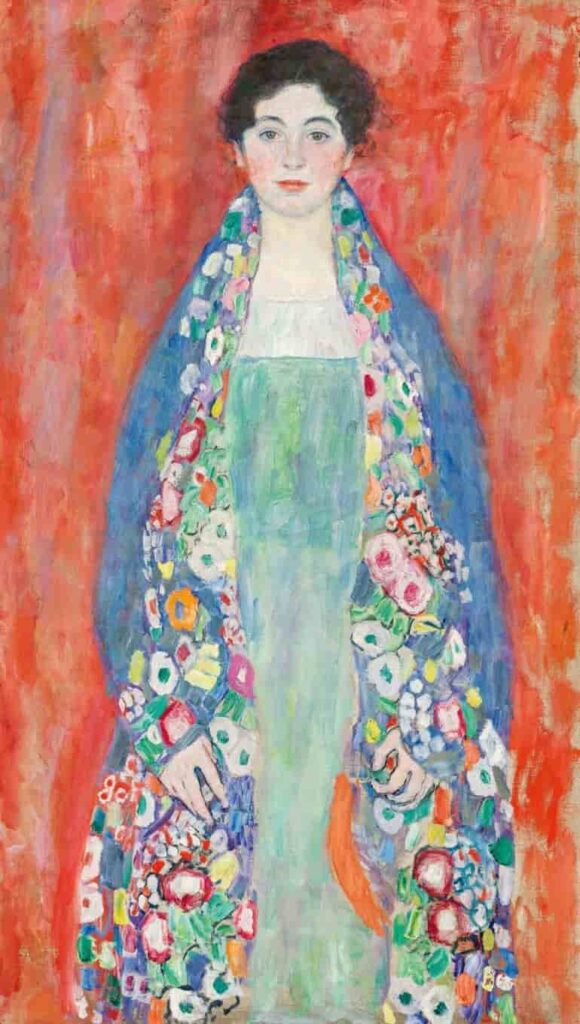ART AUCTION
Gustav Klimt’s Portrait of Fräulein Lieser fetches $32 Million despite Nazi era controversy and uncertainty about the painting’s history.
BY KAZEEM ADELEKE, ARTCENTRON
After much anticipation and excitement, Gustav Klimt’s Portrait of Fräulein Lieser (1917) recently sold for an impressive $32 million at a Vienna auction house. The painting went to an anonymous buyer represented by Hong Kong advisory firm Patti Wong & Associates, marking its rediscovery and sale as a significant event in the art world.Originally valued at €30 million–€50 million ($32.5 million–$55 million), the record sale price was a cause for celebration at Im Kinsky auction house.
Claudia Mörth-Gasser, the auction house’s head of modern art, expressed joy over the sale, highlighting the painting’s remarkable condition. She described it as “incredibly well-preserved, in almost unblemished original condition,” which was a key selling point. The Austrian government’s permission to sell the painting to a foreign buyer was another major selling point. This sale marks a milestone for the auction house, surpassing its previous highest-ever price of $6.1 million for an Egon Schiele artwork.
The Lady in the Flowing Floral Gown

Portrait of Fräulein Lieser, an oil on canvas painting measures 140 cm × 80 cm (55 in × 31 in). It portrays a likely teenage subject. The lady is wearing a turquoise dress, adorned with a flowing floral gown that stands out against a vivid red backdrop. The lady appears in a frontal pose, captivating the viewer with her calm smile and gaze. Her delicate complexion is akin to alabaster. Her piercing pale brown eyes against the backdrop of her dark and curly hair gives her a commanding presence. The color palette is typical of Klimt’s later work, rich with gold leaf and bold colors.
The painting was found partially finished in Klimt’s studio after he died in 1918. It went to the Lieser family soon after, indicating a personal connection between the artist and the family. Scholars conclude that the woman in the painting was from the Lieser family. The family was an affluent group of Jewish entrepreneurs in the Austro-Hungarian empire. They amassed their fortune through the production of twine and rope, derived from jute and hemp fibers.
Portrait of Fräulein Lieser: Nazi Regime Controversy
The painting sparked heated debate among experts when it mysteriously resurfaced. While there is certainty about the painting’s origin story, scholars grappled with gaps in the painting’s history, particularly its acquisition during the Nazi regime. Portrait of Fräulein Lieser‘s movements between 1925, when a photograph was taken while it was still in the Lieser family’s possession, and the 1960s, when the seller’s family acquired it, remain unknown.
The absence of historical lineage led art law experts and Klimt scholars to raise concerns about the painting’s sale. There were suggestions that the painting may have been unlawfully acquired during the Nazi era when Germany annexed Austria in 1938. During this awful period, Jews were persecuted, expropriated, and sent to concentration camps. However, despite complaints and open questions about who the subject of the painting is and past ownership, the auction house proceeded with the sale.
Could Portrait of Fräulein Lieser Have Made More?
There was a general agreement among some art professionals after the sale that the price realized by the painting was laudable. However, several believed that the painting could have fetched more if the auction house had filled the painting’s historical gap. Critics directed criticism at the auction house for not involving leading Klimt experts in the sale and failing to adhere to international standards. Additionally, they criticized the auction house for not complying with the Washington Principles on Nazi-Confiscated Art, established in 1998 to support the identification and return of looted art.
Im Kinsky defended the sale of the painting, stating that the sale was in accordance with the Washington Principles. The auction house acknowledged the ambiguity surrounding the painting and revealed that it reached an agreement with the current owners of the work and the Liesers’ heirs to proceed with the sale. In addition, the auction house emphasized that it will resolve and honor all possible claims of the involved parties through the auctioning of the artwork, even though they cannot disclose the contents of the agreement due to privacy.
On the issue that that the painting may have confiscated during Nazi invasion, the auction house response was that there was no evidence to indicate that or otherwise. For clarity, Im Kinsky stated that the painting had passed to its current owners through three successive inheritances.
Enduring Allure of Gustav Klimt’s Paintings
Notwithstanding, what is clear from the record auction price is the enduring allure of Klimt’s work and style. Gustav Klimt closely associates his Art Nouveau style with the fin-de-siècle Austrian avant-garde, particularly emphasizing the iconic status of his portraits of female subjects. In June 2023, Sotheby’s London set Gustav Klimt’s current auction record of $108.4 million for the painting Lady with a Fan (1917–18).. Another notable sale was his “Portrait of Adele Bloch-Bauer II” (1912), which sold for $88 million at Christie’s New York in 2006.
Portrait of Fräulein Lieser embodies more than just artistic excellence; it is a testament to the enduring legacy of Gustav Klimt and the profound impact his art continues to have on the world. Despite legal and ethical controversies surrounding its history, the portrait’s rediscovery and sale highlight Klimt’s enduring influence and the ongoing efforts to preserve and protect valuable artworks.
